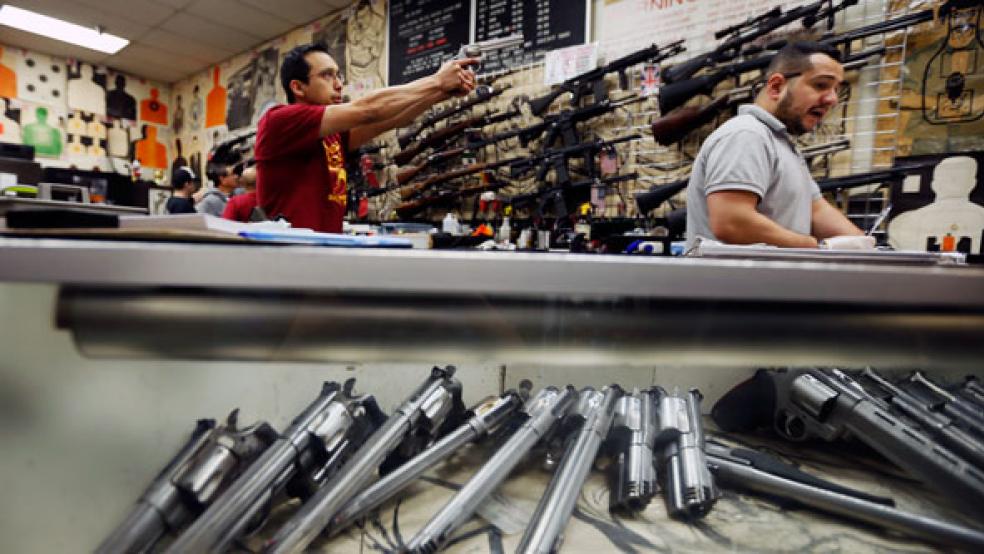Crimson Trace is a leader in the laser sight space for handguns, and the company has been enjoying rapid growth for the majority of the past six years. But CEO Lane Tobiassen faces an interesting dilemma: The company's biggest obstacle is its own customer.
In order to keep up its growth, Crimson Trace needs to persuade retail partners to upsell its product when an end customer purchases a handgun, except retail partners may not think the customer actually needs it.
Related: The Army's New Handgun - A Weapon for Criminals?
"In our industry, the people behind the counter at gun stores are enthusiast driven, not business driven, much like a rock climbing store or fly fishing store," said Tobiassen. "So they don't feel a laser is necessary, because it's not necessary for them. There is that bias that exists."
While Crimson Trace doesn't disclose financials, since it is a private small business, last year the company sold more than 300,000 units—and has sold over 2 million life to date, said Tobiassen.
Crimson Trace's laser sight, activation trigger and battery are all built into a custom stock for a handgun, rather than clamped onto the device. Instead of being powered by an external switch, the laser is activated when the pistol grip is squeezed slightly, illuminating the target with a distinct red dot.
At present, the company makes the laser sights for 180 different handguns. For most customers, the point of sale comes at retail—and that's where the problem of recalcitrant small gun-shop owners really comes into play. Ultimately, their sales habits are the source of the company's challenges in the coming years.
Related: 9 ISIS Weapons That Will Shock You
"We have the scale to produce a lot of units," said Tobiassen. "We have the market share. We have the assortment of products. We have the distribution and penetration. Anywhere that sells gun and ammo will stock us. That space in the middle—where they sell our product—is where there's a contraction."
During the recent surge in gun sales, he says, the sales philosophy shifted to move firearms as quickly as possible, and pay less attention to accessories like sights. Now that the boom times are over, many retailers are still just focusing on the gun. And for companies like Crimson Trace, that's a problem.
"A lot of the retailers got lazy during the boom times. They had six people deep and sold them a gun and then they were onto the next one," said Tobiassen.
"Now after three or four years of that, they've become accustomed to a simplistic sales process. … [Unfortunately,] within the first three months of a gun purchase is when laser purchases happen. After that, we've lost the customer."
Related: More Restaurants Say Guns and Butter Don't Mix
Today, between 10 and 15 percent of all handguns have laser sights. Tobiassen says Crimson Trace wants to see that number jump to 50 percent in the next five years.
One of the keys to that will be the expanding number of women gun owners.
"Women are frequently an easy sale because … they want a laser because it raises their confidence level and proficiency," he said. "Women can be more reluctant to embrace the use of deadly force. … So the deterrent of the laser resonates with people less likely to pull the trigger."
This article originally appeared in CNBC.
Read more in CNBC:
Marc Faber berates central banks for 'fraud'
World economy heading back to the 1980s: IHS
Google's new weapon against Facebook: Cardboard

